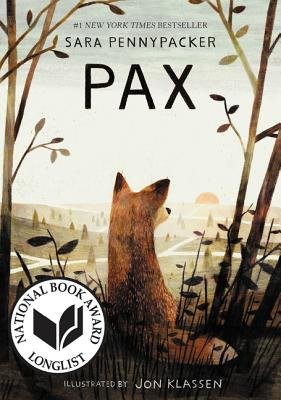On Exploring Empathy with Children Through Books
by Sara Pennypacker
Sara Pennypacker is the author of Brightly’s Book Club for Kids pick Pax. Click here to learn more about the book, discover activities and tips for discussion inspired by Pax, and join in on the reading fun.
Sadly, the conversation a book initiates usually takes place out of the author’s earshot — it happens between readers, or between readers and their friends and family. When I am privileged enough to be present, I’m most thrilled when the conversation branches out through questions that sprout up.
One thread that comes up often during the school visits I’ve done since Pax’s publication is something I’m calling “half a backpack.” It’s part of a larger discussion of the costs of war which are borne by children. “Imagine,” I ask a class, “that tomorrow your parents wake you up with news that war is heading for your town. They hand you your backpack and tell you to put in survival items — clothes, food and water, maybe some tools. You may fill the space that’s left — half a backpack if you are lucky — with the things most important to you.”
In Pax, Peter’s backpack contains survival items. But he also makes room for a photograph of his mother, her favorite bracelet, and his baseball and glove. These things comfort and strengthen him, reminding him of who he is, and of whom and what he loves.
Pax doesn’t have a backpack, of course. However, he also takes something valuable with him as he begins his journey: the toy soldier he and Peter played with, the only physical link he has to his boy.
In classrooms we ask each other, “What would you take in your half a backpack?” and “Which things would be the most difficult to leave behind?” I think these would be powerful questions to ask in a family. Walk around your home — if each member could fill only half a backpack, what would s/he choose? Which things would be hardest to leave behind?
Inevitably, the thought occurs to the students that pets are included among these “things that must be left behind.” There is a moment, then, of palpable shock. Pets are not things, they are part of the family! “But no,” I have to tell them, “for the most part, refugee children can’t take their pets.”
At this point, the conversation often turns to the other theme of Pax — the bonds possible between humans and animals. Kids wonder how life is for pets abandoned in war. They tell me stories of bonding with their dogs and cats, and stories about wild animals they’ve rescued, or had meaningful encounters with.
I am glad when reading Pax encourages this kind of empathy. Writing it certainly did.

Before writing Pax, I might not have paid this fox any attention. Now I always stop to wish him well, and to wonder: How are we connected? Yet another question in the conversation…

